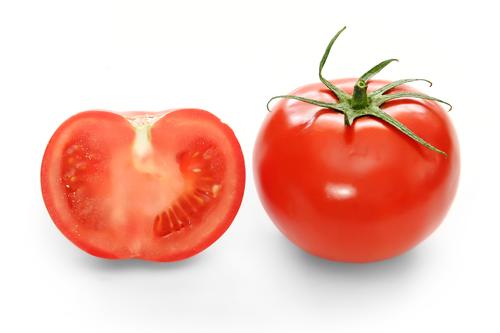Researchers Turn to Rotten Tomatoes for Biofuel
Researchers at the South Dakota School of Mines and Technology has developed a way to turn tomato waste into a new type of biofuel.
April 11, 2016
Tomatoes now join corn, soybeans, and algae as a food that can serve as the basis for biofuels that could one day replace environmentally harmful fuels.
Venkataramana Gadhamshetty, an assistant professor in the the South Dakota School of Mines and Technology's Civil and Environmental Engineering Department, told Design News he and his team were inspired by the idea of recycling “the voluminous amounts of tomato wastes” generated from tomato harvesting in Florida to develop a new energy source, which could replace contemporary fuels such as ethanol, hydrogen, and methane.
It also could reduce the environmental burden of treating and transporting the 396,000 tons of defective tomatoes produced in Florida harvests every year, he said.

A team at the South Dakota School of Mines and Technology has developed a way to turn tomato waste into a new type of biofuel.
(Source: Wikipedia)
The composition of decomposing waste from imperfect tomatoes deemed unsuitable for grocery store shelves as well as leftovers from manufacturing processes to create products like tomato sauce and ketchup is ideal for enhancing electrochemical reactions, Gadhamshetty told us.
He and his team tested the tomatoes in an electrochemical device they built that degrades the waste and then extracts electrons from it.
“We generate direct current (DC) electricity from the tomato wastes,” Gadhamshetty explained. “For example, the flesh in culls serve as an excellent source for energy-rich sucrose that is endowed with high value for Gibbs free energy of formation. Similarly the flesh in culls is rich in amino acids. From our preliminary experiments, we found that the microorganisms can be used to swiftly extract the electric current from tomato wastes under ambient conditions.”
READ MORE ARTICLES ON BIOFUEL:
While the power output from the device in tests was small -- with about two pounds of tomato waste resulting in .3W of electricity -- they expect this can scale up with more research, improving by several orders of magnitude.
“We are exploring strategies to identify and minimize the factors that reduce the electrical performance of waste-to-electricity production process,” Gadhamshetty told us. “We’d also like to address challenges associated with materials and reactor configurations.”
Practical applications for the devices could be to power sensors or to convert household waste from a sink’s waste disposal system into electricity for a household, he added.
Elizabeth Montalbano is a freelance writer who has written about technology and culture for more than 15 years. She has lived and worked as a professional journalist in Phoenix, San Francisco, and New York City. In her free time she enjoys surfing, traveling, music, yoga, and cooking. She currently resides in a village on the southwest coast of Portugal.
About the Author(s)
You May Also Like

.jpg?width=300&auto=webp&quality=80&disable=upscale)

